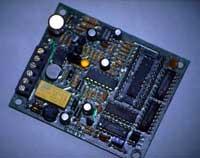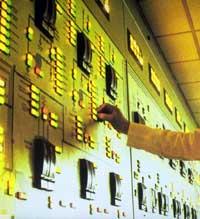Recording thoughts
Not all thoughts are the same; some, the simplest, can already be recorded, among others, those that affect the movement of the body. Correcting the eyes to catch a glass of water or reading these lines are thoughts that are studied and can be known today. Other relatively easy thoughts to find are emotions; lie detectors, for example, are background machines that can record thought. While unable to read thought, lie detectors can interpret the physiological reactions that occur as a result of certain emotions. More complex thoughts, such as that of memory, escape the current instruments of analysis.

Work in the brain is basically electric. Therefore thoughts can be considered as electrical stimuli, captable, expandable, decodable and reconductable depending on the will that controls the quinada. From this point of view, it is evident that the brain circuit has a great similarity with another system: the computer. This is why studies are currently being developed to adapt the information format circulating through the brain to the information format circulating through computers. Regardless of the technique used to achieve this adaptation of formats, finally the thoughts must become binary codes for the computer to take them. Binary code is a nose to collect data. Numerous images, sounds and binary code texts are stored and used on computers.
Projects and prototypes

More and more organizations are investigating the pathways of reading brain signals and more and more are making prototypes. Many of these initiatives are focusing on improving communication between the deep physical weaknesses, such as paraplegic and tetraplegic. These diminished ones are connected the interface, a tool capable of sending to the computer the nerve quinada that they use to give the order to some part of the body. This does not require these nerve stimuli to act on the muscles. Prototypes of computers that receive and respond to these basic guidelines have already been developed. Thus, the small one, depending on the nervous intensity that you can send, can make phrases on the computer screen, order the computer to turn on the light or heating, signal that someone comes or fulfill similar simple orders. It is therefore clear that progress has been enormous, especially to address the health and incommunicado problems of this society.
Secret investigations
As in other development cases, in this case of reading thought, another reading can be done, since this technique that is being developed can have all kinds of applications. It is true that most of the investigations are being carried out in the health sector, but military investigations are also being given priority. For example, driving planes with thought. It is clear that if a plane driver managed to control the plane with thought, it would have advantages far superior to the usual driver better prepared. Research is based on the frequency of brain waves. If properly trained, aircraft drivers can cause small fluctuations in the frequency of their brain waves, which the system will understand as associated commands. Research has not yet yielded results, but it seems that something can come that way. That study began 30 years ago by the U.S. military, but until the beginning of this decade it did not accept that it was being done.
Difficult exit problem
It can never be said that research reaches the goal that everyone wants. However, in view of what they are doing, the question of time and technical development seems to be that the complete recording of thought is a reality someday. From the point of view of communication, the technique being developed has its advantages, since it allows to improve communication between humans. From the point of view of intimacy, there comes a great break, as you can know the thoughts of anyone. The development of the technique opens new windows and scientific objectives that can answer questions that humanity has always wanted to solve: What does death feel like? What about thinking after death? etc.
Complete recording of thought requires complete communication compatibility between the human brain and the machine. Not only that, new opportunities also appear in the field of research, such as the fusion of artificial intelligence and natural intelligence. It does not seem, in principle, that the most advanced machine of the following years can have consciousness - the trait that characterizes the machine and the human -, but what would happen if the computer was added a living brain tissue? Would we be facing a data processor with psyche? Who knows! Fortunately and for the moment, the recording of all thought and computer with natural and artificial intelligence are closer to fiction than to science.
Published in 7
Buletina
Bidali zure helbide elektronikoa eta jaso asteroko buletina zure sarrera-ontzian











